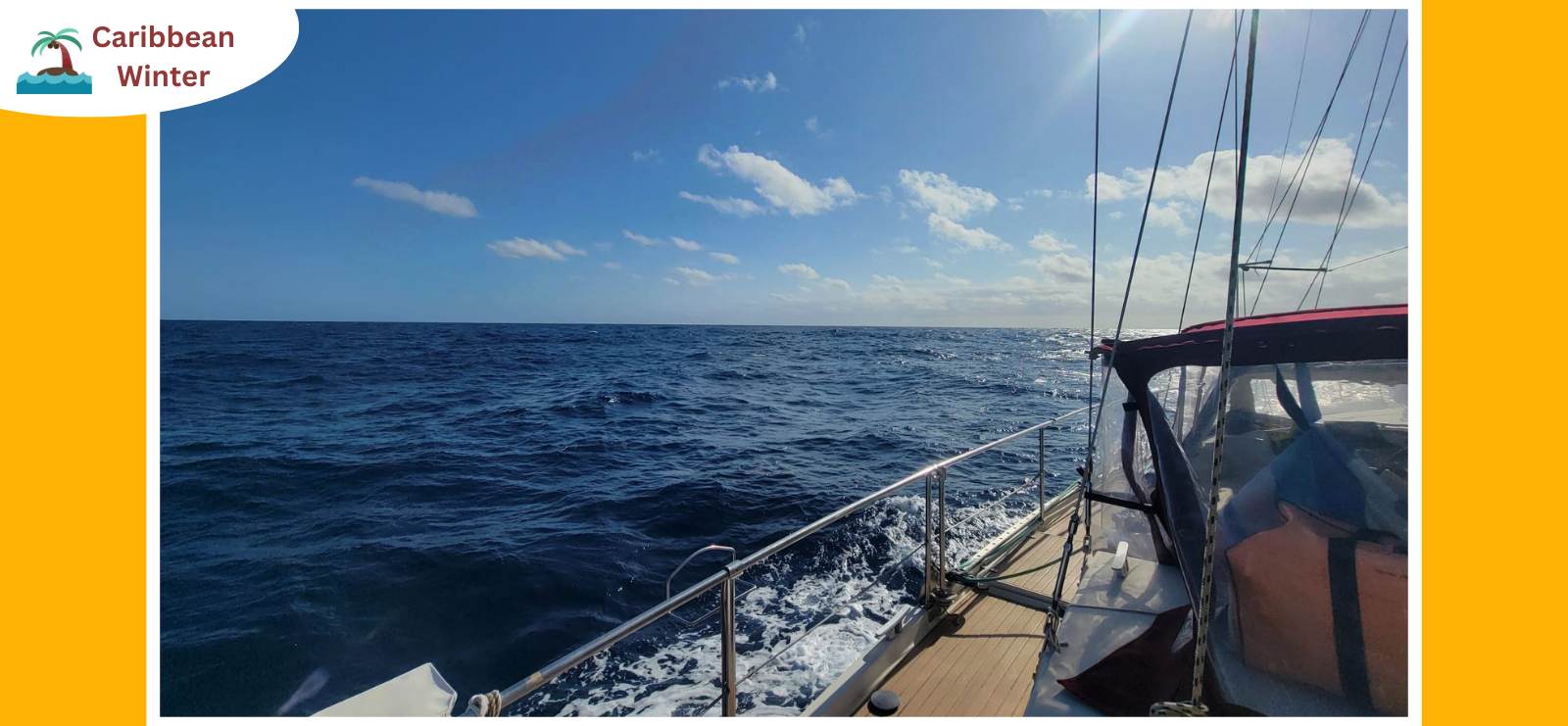
Date : 19 Nov 2024
Compiling this from a dried-out, water-logged logbook confirms the old adage: “the best-laid plans often go awry.”
This winter, unlike in the past, we intended to begin the voyage from New York to the Caribbean, via Bermuda, in early to mid-October rather than November, when winter gales always seem to find you. There comes a point when you accept that November weather in the Northeast Atlantic can and usually is brutal.
Our goal was to be voyage-ready by October 10, weather permitting. Of course, the “to-do” list wasn’t complete by then. However, unsettled weather gave us an additional week to finalize preparations, and at 1:35 a.m. on Saturday, October 19, we set off from Greenport, NY, to Bermuda.
While we always hope to avoid stopping in Bermuda, this stop was certain due to crew logistics. In all my numerous trips between the Caribbean and New York, only once did we not “have to” stop in Bermuda. The first few days of a voyage are often unsettling as you sync with the rhythms of ocean cruising and solar time. Since Bermuda is typically a four-day trip, you’ve just adapted when you have to stop. It can feel physically and mentally frustrating. But as we often joke: “Gee, we have to stop in Bermuda—poor, poor us.” Bermuda is a great ocean landfall, and the hail of “Radio Bermuda” as you approach the island, carrying a distinct British accent, is both soothing and soulful.
Our departure strategy involved riding the backside of a low-pressure system to take advantage of following winds. By 3:00 a.m., we passed Gardiner’s Island, reaching a northeasterly wind and making 7+ knots towards the departure coordinates at Montauk Point. The skies were clear and vivid, with no haze on the horizon. Shortly after darkness fell, an almost full moon rose on the ocean’s horizon, blazing orange like a sunrise—it was awe-inspiring. By sunrise, however, the winds had lightened, and what followed was the incessant motor-sailing of this trip.
Crew and Challenges at Sea
A captain is responsible for every aspect of a vessel’s operation, including crew morale and performance. Pairing the right crew is crucial; packing the boat with capable sailors isn’t enough. On a 53-foot vessel, there’s no escape when personality conflicts arise. Even during “off-watch” hours, the crew is never truly off duty, as the boat’s noises and movements are constant reminders of the voyage’s demands.
On this journey, my crew consisted of Jack and Katy. Having sailed thousands of ocean miles with them, I knew them to be capable, responsible, and harmonious—a pairing that proved invaluable.
As we headed southeast into open ocean, the seas grew unsettled, with steep, 8-10 foot, multi-directional waves at six-second intervals. Non-sailors often ask about the largest waves encountered, but the size isn’t as important as the time between them. A five-foot wave with short intervals can be more destructive than a 20-foot wave with long periods. Unfortunately, we had no such luxury, and within hours, nausea struck the crew, lasting throughout the trip. Pre-prepared meals remained untouched as we subsisted on ginger tea and crackers. The engine’s constant grind and faint diesel fumes only added to the discomfort.
Entering the Gulf Stream
By the evening of our second day, we entered the Gulf Stream, finding relief from the confused seas but still enduring light winds. Motor-sailing along the southeasterly current allowed us to make significant progress. Outside the Gulf Stream, northeast winds strengthened, enabling us to finally sail without auxiliary power. Spirits lifted as we enjoyed a simple meal of scrambled eggs and toast that, mercifully, stayed down.
By the afternoon of day three, however, we received troubling news: Tropical Storm Oscar was regaining strength off North Carolina and heading toward Bermuda. Our weather router advised us to reach landfall as quickly as possible to avoid the storm. Brief respite from motor-sailing ended as easterly winds turned on our nose, accompanied by steep waves. It became a “meticulous course correction” situation, requiring diesel power to maintain course towards Bermuda’s northeastern reefs.
Landfall in Bermuda
On the fourth day, wind and sea conditions worsened, and by nightfall, visibility was nonexistent. Navigating with electronic instruments was nerve-racking, particularly when we encountered a cruise ship. Its bright lights obscured its navigation signals, but after radio communication, the ship’s officer accommodated our limited maneuverability and passed safely to starboard.
As we approached St. George’s Town Cut—a narrow passage into the harbor—the howling winds calmed slightly, but rain obscured the markers. In pitch darkness, we navigated by chart plotter, threading the needle between coral reefs and rock walls. By 3:45 a.m. on Wednesday, October 23, after 98 hours at sea, we dropped anchor in St. George’s Harbor amid gusting winds and heavy rain. Exhausted, we barely celebrated the accomplishment, opting instead for rest.
The following days revealed the storm’s full fury, with sailors behind us facing 30-foot seas and 50-knot gusts. We escaped by mere hours. Over drinks and burgers at the White Horse Tavern, we reflected on the voyage and prepared for the next leg.
Why We Sail
Some might call it a death wish. But for those familiar with ocean adventures, few experiences on land match the sense of accomplishment from completing a voyage. Despite modern safety measures and technology, the power and unpredictability of the sea are humbling. Respecting these forces while maintaining discipline allows us to become part of this vibrant, ever-changing world.
Out on the open ocean, you witness incredible sights: dolphins surfing the bow, rainbows spanning the horizon, and celestial displays that mesmerize and guide. These moments remind us why we endure the challenges of sailing. At anchor or the landfall pub, we share a quiet understanding: it truly is a wonderful world.
Thank you to my crew,
The Captain